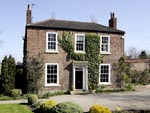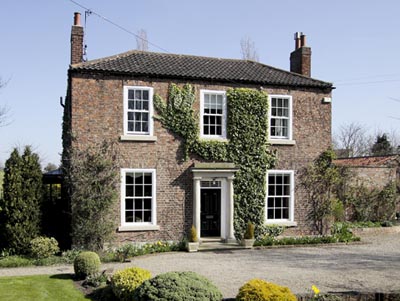The value of moving north
As the gap between house prices in the north and south widens, there are plenty of opportunities for those who can relocate


For those who are able to take advantage, the price differentials between the South-East and the North have never looked so attractive. According to Savills Research, a buyer with a budget of between £2.75 million and £3 million might secure a 4,500sq ft, six-bedroom country house in Sussex set in 4½ acres or head up to Yorkshire and buy an 11,000sq ft, seven-bedroom Georgian mansion set in 44 acres of God's own county. Although both regions fell by roughly the same amount in the downturn, their recoveries since the market bottomed out in March 2009 have differed: in the South-East, prices have risen by 14.5%, but those in the North have continued to slip, falling by 5.2% in the past year.
After several years of gloomy sales figures throughout the region, the Yorkshire market has patches of positive signs emerging from the dust of the quiet summer. Edward Stoyle of Carter Jonas in York reports that they are ‘doing quite well up here'. The spring of 2012 saw too much stock on the market, leading to uncertainty among buyers and things foundered. ‘Now, there's a better balance of supply and demand and, although it's not easy, there are positive signs on the horizon. The key is to price sensibly, attract interest and build competition.'
But the movement is patchy. ‘Although big houses on the moors are proving hard to sell, York city centre is flying,' continues Mr Stoyle. He cites two examples of recent sales: a modern, high-spec mews house in old York, which sold for £1 million, and an elegant Regency town house just outside the walls but near the station, which sold for £695,000. ‘York city is getting lots of attention at the moment. Prices average at between £200 and £300 per square foot, whereas some parts of London now sit at £6,000 per square foot. Plus it's only two hours on the train-the average commute in London is one hour, the schools are excellent, the city is easy-going and there's wonderful countryside on the doorstep.'

Tim Waring of Knight Frank's Harrogate office says that activity remains firmly within what he deems to be Yorkshire's ‘diamond' -the area between Leeds, Skipton, Ripon and York, which, happily for him, has Harrogate at its centre. ‘Values are driven by distance from the infrastructure routes, but here, Yorkshire is increasingly a winner: the East Coast Mainline takes two hours by train to London King's Cross from York; British Airways is re-opening its Leeds-Bradford to London Heathrow route in December and the A1 has been much improved in that you can now drive from Newcastle Airport to Bedford-shire without encountering a roundabout. ‘So anyone considering a move from the South will find the weekly or part-weekly commute is much more manageable than it once was.'
In terms of country houses, when the chemistry combines to marry the right house and the right location, prices can easily match those of Gloucestershire. ‘There are only a finite number of houses on the market because up there they remain within the same family for generations,' he adds, citing the recent launch of Arthington Hall, which has been in the same family since the 1840s.
Further north still in the Northumberland and Tyne valley, Duncan Young of Sanderson Young reports that things have ‘turned a corner' in the middle and upper end of the market, with the company sales performance increasing by 17% against 2011. ‘Demand is strong in the areas around Newcastle-upon-Tyne for family houses as well as in Cleadon, Whiteburn and Hexham.' He cautions that things still remain very difficult, and with credit being a problem across the board this is unlikely to change for years to come, but southerners coming in search of fresh air and bracing walks on blustery beaches are still looking on the north Northumberland coastline.
Southern buyers escaping north continue to make a dent in the market in Cumbria, according to Carlisle-based Adrian Tod of Hayward Tod. Here, buyers from beyond Cumbria account for 25% of sales-and that includes some overseas interest: Jamie Adam of Jackson-Stops & Staff recently sold a property in Cumbria to a Canadian. The attraction has to be the Cum-brian countryside and easy access to the Lake District National Park. ‘Houses with large gardens and, in particular, with acreage are in demand.'
Sign up for the Country Life Newsletter
Exquisite houses, the beauty of Nature, and how to get the most from your life, straight to your inbox.
* Subscribe to Country Life and save £1 per issue
-
 380 acres and 90 bedrooms on the £25m private island being sold by one of Britain's top music producers
380 acres and 90 bedrooms on the £25m private island being sold by one of Britain's top music producersStormzy, Rihanna and the Rolling Stones are just a part of the story at Osea Island, a dot on the map in the seas off Essex.
By Lotte Brundle Published
-
 'A delicious chance to step back in time and bask in the best of Britain': An insider's guide to The Season
'A delicious chance to step back in time and bask in the best of Britain': An insider's guide to The SeasonHere's how to navigate this summer's top events in style, from those who know best.
By Madeleine Silver Published
